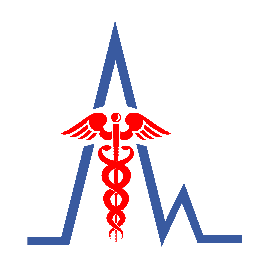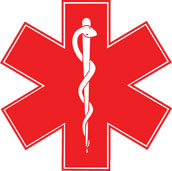Gynaecology & Obstetrics

At North City Hospital we provide utmost care to women’s health and we have been catering to unique personal needs of woman of all ages with sensitivity and care. North City Hospital brings to you a full spectrum of Obstetrics and Gynaecology services from the yearly checkups to obstetrics care and menopause management.
Gynaecology
Common conditions in Gynaecology which we treat at North City Hospital are as follows.
What is Menopause in Gynaecology?
It represents the end of menstruation. It is not an illness, but the natural end of female fertility. As we age, production of the 2 sex hormones, oestrogen and progesterone, in the ovaries slows down, and the ovaries stop producing eggs.
Why it happens?
Menopause naturally happens between the ages of 45 – 55 years, although it can occur as early as in the 30s, and as late as in the 60s.
Symptoms (Menopause is different for every woman)
- Mood Swing
- Aches, weakness or stiffness caused by reduced oestrogen levels, stress or tension, and lack of exercise
- Constipation and gas
- Urinary Incontinence
- Hot flushes and night sweats from hormonal changes
- sweating, rapid heartbeat, nausea and dizziness
- Sudden intense heat in face and neck
- Poor sleep –Skin and hair changes – your skin becomes thinner and drier, your hair growth slows down
- Vaginal changes: The vaginal lining becomes drier, thinner and less elastic
- Sexual intercourse may become uncomfortable or painful
- The skin around the vaginal opening becomes dry and thin, causing discomfort or itching
- The vagina becomes more vulnerable to infection
- Weight gain around your waist – your body begins to use calories more slowly, so you need to eat fewer calories
- Your urethra (the tube that carries urine from the bladder) may become inflamed or irritated causing frequent urination
Treatment
- Aches, weakness and stiffness – regular exercise and relaxation practices
- Constipation and gas – eat high-fiber foods (fruits, whole meal bread, and fresh vegetables)
- Hot flushes and night sweats – wear cool natural clothing like cotton to let your skin ‘breathe’, drink something cold at the start of a flush, shower with tepid water instead of taking warm baths, and avoid alcohol, coffee and spicy food
Medication
- Hormone therapy for moderate to severe symptoms
- Low-dose oral contraceptives (birth control pills) may stop or reduce hot flushes, vaginal dryness and moodiness
- Other medications may help with specific symptoms vaginal and urinary tract changes – use a water-soluble lubricant before sexual intercourse, maintain your personal hygiene and exercise regularly to prevent urinary incontinence
- Weight gain – cut down on your calorie intake and exercise regularly
What is Menorrhagia in Gynaecology?
Menorrhagia is the name given to heavy and prolonged menstrual periods that disrupt a woman’s normal activities. Average blood loss during menstruation is around 30 to 40 milliliters, or 2 to 3 tablespoons, over a period of 4 to 5 days. Officially, menorrhagia is a loss of over 80 milliliters of blood in one cycle, or twice the normal amount.
Common causes of Menorrhagia
- Hormone imbalance
- Dysfunction of the ovaries
- Uterine fibroids
- Polyps
- Adenomyosis
- Intrauterine device (IUD)
- Pregnancy complications
- Cancer
Treatment for Menorrhagia depends on the cause or the underlying medical condition.
Medical Management
- Nonsteroidal anti-inflammatory drugs (NSAIDs). NSAIDs, such as ibuprofen (Advil, Motrin IB, others) or naproxen sodium (Aleve), help reduce menstrual blood loss. …
- Tranexamic acid
- Oral contraceptives
- Oral progesterone
- Hormonal IUD (Liletta, Mirena)
Surgical Management
- Polyps are generally removed;
- Fibroids may require a myomectomy or hysterectomy (surgical removal of uterus and cervix).
- Hysterectomy and radiation are usually considered for endometrial cancer.
- Pelvic Organ Prolapse
- Polycystic Ovary Syndrome
- Urinary Incontinence
- Uterine Fibroid
What is Prolapse in Gynaecology?
Pelvic organ prolapse occurs when the pelvic organs drop from their original position in the pelvis. This is a very common condition, especially among older women. It occurs when the pelvic floor muscles become weak or damaged, and can no longer support the organs of the pelvis. The pelvic organ prolapse can involve any of the pelvic organs including the uterus (womb), ovaries and fallopian tubes as well as the rectum and bladder.
Causes of Prolapse
A prolapse is caused by the continuous weakening of the supporting tissues of the pelvic organs. This weakening may be caused by:
- Chronic cough or strain from constipation
- Congenital (present at birth) weakness of the pelvic floor muscles, ligaments and fascia
- Menopause – The supporting tissues become weaker with age and menopause
- Obesity, large fibroid (fibrous growth), tumour or previous pelvic surgery
- Pregnancy and childbirth, especially after a difficult and prolonged labour
- Strenuous physical work or heavy lifting
Symptoms
- A swelling sensation in the vagina or a lump outside the vagina
- Backache that progresses through the day
- Difficulty in passing urine or stools
- Difficulty in walking or sitting
- Vaginal bleeding and discharge (not part of the menstrual cycle)
Treatment
Pelvic floor exercises to strengthen your pelvic muscles or a pessary (a removable device) placed inside your vagina to hold the prolapsed organ in place.
Surgical treatment may be needed to lift the prolapsed organ(s) back into place:
- Anterior repair of a cystocoele (bladder prolapse) – also called colporrhaphy
- Posterior repair of a rectocoele or enterocoele – also called colpoperineorrhaphy
- Vaginal hysterectomy to remove the uterus (womb) through the vagina and repair of the vagina
- Vault prolapse surgery
What is Cervical Cancer in Gynaecology?
Cervical cancer is a type of cancer that occurs in the cells of the cervix — the lower part of the uterus that connects to the vagina. Various strains of the human papillomavirus (HPV), a sexually transmitted infection, play a role in causing most cervical cancer.
Symptoms
Early cervical cancer has no symptoms. You should see a doctor if you have any of the following symptoms:
- Abnormal bleeding from the vagina (after sexual intercourse or between menstrual periods)
- Chronic constipation and feeling a presence of a stool despite having emptied your bowel
- Leaking of urine or faeces from the vagina
- Low back pain or pelvic pain
- Pain during sexual intercourse and vaginal discharge
- Painful or difficult urination and cloudy urine
Treatment
It depends on the stage of the cancer
- Early stage cervical cancer is treated by removal of the uterus (hysterectomy) or radiation therapy (high-energy x-rays), often with chemotherapy
- Late stage (advanced) cervical cancer is treated by radiation therapy, often with concurrent chemotherapy
What is Uterine cancer in Gynaecology?
The uterus, or womb, is the place where a baby grows when a women is pregnant. Uterine cancer is an abnormal growth of tissue in the uterus (womb). There are different types of uterine cancer. The most common type starts in the endometrium, the lining of the uterus. This type is also called endometrial cancer.
Symptoms
- Abnormal vaginal bleeding:
- Heavy menstrual bleeding
- Irregular menstrual bleeding
- Postmenopausal bleeding
- Occasional pelvic pain
- Vaginal discharge
Treatments
The main treatment for uterine cancer is surgery to remove your uterus, fallopian tubes and ovaries. The nearby lymph nodes are also likely to be removed. Additional (adjuvant) treatments include:
- Chemotherapy
- Hormone treatment
- Radiotherapy
Additional therapy will depend on the stage, grade and type of cancer.
What are Ovarian Cancer in Gynaecology?
Ovarian cancer is an abnormal growth of tissue in the ovary. The ovaries are part of the female reproductive system where the eggs are produced. If left untreated, the tumor can spread to other parts of the body. This is called metastatic ovarian cancer
There are 3 main types of ovarian cancer
- Epithelial tumours
- Germ cell tumours
- Stromal tumours
Symptoms
- Abdominal swelling and discomfort (pressure, fullness, or bloating)
- Changes in bowel habits, e.g. Constipation
- Loss of appetite or weight loss
- Lower back pain
- Pain during sexual intercourse
- Persistent indigestion or nausea
- Urgent or frequent need to urinate
Treatment
Surgery
The choice will depend on the type of cancer and how far it has spread. Surgical options include a hysterectomy, removing one or both ovaries, and removing affected lymph nodes. A doctor will discuss suitable options with the individual.
Chemotherapy
These drugs aim to kill cancer cells
Radiation therapy
This technique uses X-rays to kills cancer cells.
*Radiotherapy is not available with us
Obstetrics
We’re here to support you through your pregnancy, birth and your children’s early years. Our key role is in the promotion of health and prevention of illness for mothers, babies and young children.
Mother
The Department provides comprehensive services ranging from health promotion to clinical excellence in maternity and gynaecology. We deliver compassionate care with the state – of – the – art technology in a family centered environment.
Department-Highlights
- The department has well equipped maternity complex.
- The patient is under observation by doctors on duty and supported by well trained & experienced nursing staff.
- There are dedicated operating rooms for cesarean section.
- Advanced Laparoscopic surgery is offered for removal of tumors & cysts through very small incisions. Minimally invasive surgery is used for removing even large sized uterus and tumors with the help of harmonic knife.
Highly skilled services are available for Hysteroscopic surgery in the management of complex disorders like double uterus, intrauterine fibroids and adhesions (without any incision or stitches).
Services & treatments offered in Obstetrics are given below.
The most beautiful moment in a woman’s life is the birth of her Child. We understand this and as you journey into motherhood our maternity services will make your experience a pleasant and enjoyable one.
Maternity services Include
- Preconceptional assessment and counseling
- Comprehensive Antenatal care
- Pain relief during labour
- Postnatal care
Tertiary level nursery and neo-natal Intensive Care Unit (NICU)
A high risk pregnancy is that with a significant probability for a poor maternal or a fetal outcome. Our High risk delivery team is adequately trained and equipped to ensure a safe delivery for such patients.
High risk pregnancy includes those with:
Obstetrical Complications like · IUGR · Preterm · Pre Term Rupture Of Membranes, PPROM · Post dated pregnancy · Oligo and Polyhydroamnios · PIH · Multiple Pregnancy · Placenta Previa and Accidental Hemorrhage · Recurrent Pregnancy loss · Family history of genetic diseases | Preexisting medical complications · Diabetes mellitus · Hypertension · Heart Disease · Thyroid disorder · Renal disorder · Epileptic disorder · Hematological disorders like Anaemia Thrombocytopenia, |
Our vision is to serve women by advancing the safest and most efficacious diagnostic and therapeutic techniques that provide less invasive treatments for gynecologic conditions. Minimally invasive gynecology is an option all women should consider before committing to any gynecologic procedure.
Laparoscopic surgery: In traditional “open” surgery the surgeon uses a single incision to enter into the abdomen. Laparoscopic surgery uses several 0.5-1cm incisions. Each incision is called a “port.” At each port a tubular instrument known as a trochar is inserted. Specialized instruments and a special camera known as a laparoscope are passed through the trochars during the procedure, the abdomen is inflated with carbon dioxide gas to provide a working and viewing space for the surgeon.
Hysteroscopic surgery: Hysteroscopic surgery is a type of minimally invasive surgery in which no incision is given. Rather the natural passage through the cervix is used to introduce the hysteroscope into the uterus for both diagnosis as well as treatment of uterine conditions.
Colposcopy
Diagnosis and management of precancerous conditions and cancers of female genital tract.
Our team of Experts in Gynaecology & Obstetrics
| Name | Credentials |
| Prof. (Doctor) SUBHAS BISWAS | MBBS, MD (PGI), FICOG, FIMSA |
| Prof. (Doctor) SUDHIR ADHIKARY | MBBS, MD (CAL), DGO, FICMCH, FICOG |
| Prof. (Doctor) DEBJANI BHADRA | MBBS, MD (G&O) |
| Dr. RAJENDRA PRASAD GANGULY | MBBS, MS (GYNAE), DGO |
| Dr. NILANJANA CHOWDHURY | MBBS, MS (GYNAE), DGO |
| Dr. SIKHA SINGH | MBBS, MS (GYNAE), DGO |
| Dr. AVISHEK BHADRA | MBBS, MS, DNB, MNAMS |
| Dr. DIPANKAR BHATTACHARIA | MBBS, MD, DGO, MRCOG (LOND) |
| Dr. KANYA KUMARI KUNDU | MBBS, MS (OBS & GYN), DNB ( OBS & GYN) |
Common OT performed at North City Hospital
What is Hysterectomy?
Hysterectomy is a surgical procedure that is done to remove the uterus (womb).
Depending on the reason for the surgery, it may be done through a cut in the abdomen (Abdominal Hysterectomy) or through the vagina (Vaginal Hysterectomy).
Abdominal hysterectomy is usually done if the uterus is large from a fibroid (fibrous tissue) or tumour, while a vaginal hysterectomy is usually done for a prolapsed (out of place) uterus. Laparoscopic Assisted Vaginal Hysterectomy (LAVH) is a surgical procedure using a laparoscope to guide the removal of the uterus and/or Fallopian tubes and ovaries through the vagina (birth canal).Sometimes, the ovaries and fallopian tubes are removed together with the uterus and cervix. The decision to remove the ovaries and fallopian tubes depends on the reason for surgery.
Why Hysterectomy is needed?
Hysterectomy may be needed if you have:
- Cancer of the uterus, ovary, cervix or endometrium
- Fibroids – Non-cancerous tumours in the wall of your uterus
- Endometriosis – The tissue that lines the uterus grows outside your uterus on your ovaries, fallopian tubes or other organs
- Prolapse of the uterus – Your uterus drops from its usual position down into your vagina
- Adenomyosis – The tissue that lines the uterus grows in the muscle walls of your uterus
- Chronic uterine pain
- Severe abnormal vaginal bleeding
Very rarely, hysterectomy is needed to control bleeding during a caesarean delivery following rare pregnancy complications. There are other methods to control bleeding, but hysterectomy may be life-saving for some women.
What is Myomectomy?
Myomectomy is a surgical procedure to remove uterine fibroids — also called leiomyomas. These common noncancerous growths appear in the uterus. Uterine fibroids usually develop during childbearing years, but they can occur at any age.
Why is Myomectomy needed?
Myomectomy, also known as fibroidectomy, refers to the surgical removal of uterine leiomyomas, also known as fibroids. In contrast to a hysterectomy the uterus remains preserved and the woman retains her reproductive potential.
What is an Oophorectomy?
An oophorectomy is a surgical procedure to remove one or both of a woman’s ovaries.
Why Oophorectomy is done?
The surgery is usually performed to prevent or treat certain conditions, such as ovarian cancer or endometriosis.
What is Pelvic floor Reconstruction Surgery?
It is a surgical procedure that is done for severe pelvic organ prolapse in women. Pelvic floor reconstruction surgery usually consists of one of several different procedures for correcting pelvic organ prolapse. The goal of surgery is to restore the normal structure and function of the pelvic organs.
Learn more about Gynaecology and Obstetrics








